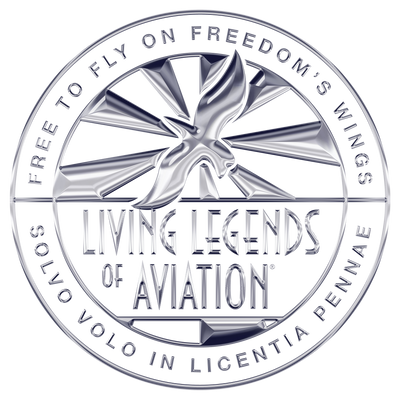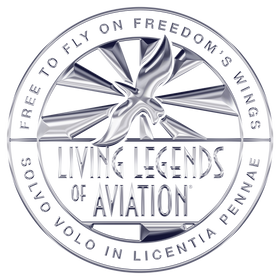MAJ. GEN WILLIAM "BILL" ANDERS

Bill is a former United States Air Force officer, a fighter pilot who loves afterburners, a nuclear engineer, a NASA astronaut and businessman. He received a Bachelor of Science degree from the U.S. Naval Academy in 1955, a Master of Science degree in Nucle- ar Engineering from the U.S. Air Force Institute of Technology at Wright Patterson AFB in 1962, and completed the Harvard Business School’s Advanced Management Program in 1979.
He was commissioned in the U.S. Air Force after graduating from the Naval Academy and received his pilot wings in 1956. He served as a fighter pilot in all-weather interceptor squadrons of the Air Defense Command in California and in Iceland during the Cold War, flying F-89Js. He later was responsible for technical management of nuclear power reactor shielding and radiation effects programs while at the Air Force Weapons Lab in New Mexico. The interest and training in the areas of radiation effect, environmental controls and dosimetry qualified him for an opportunity to be selected by NASA in the third group of astronauts.
In 1968, Anders flew as Lunar Module Pilot for the Apollo 8 mission, and became one of the first three persons to have left Earth’s orbit and travelled to the moon. His crewmates were Frank Borman and Jim Lovell. While in lunar orbit, Bill Anders took the iconic color photo of Earthrise. On the tenth revolution of the moon, the crew lit the service propulsion engine that sent them back on a trajectory to earth. The Apollo 8 crew was given tickertape parades in Chicago and New York.
Anders served as executive secretary for the National Aeronautics and Space Council from 1969 to 1973 and was later appointed to the five-member Atomic Energy Commission. He decided to leave the federal government after 26 years of service and took a job at General Electric. He later worked for Textron, retiring from the Air Force Reserves at the rank of major general. He later worked for General Dynamics Corporation.
Bill and his wife Valerie have called the state of Washington their home. They raised 4 boys and 2 girls; several of the boys are pilots, Not all of the family members participate in getting together for “formation-flying” on the weekends, but all work together on a project close to Anders’ heart: the Heritage Flight Museum. Anders’ commitment to preserving and flying yesterday’s warbirds, as well as his role in helping lead the Apollo space program to success, led to Ander’s enshrinement in the National Aviation Hall of Fame in 2004. He was the recipient of the “Heritage Patriot Award” from the Living Legends of Aviation in 2008. He and his family formed the Anders Foundation in 1996 dedicated to flying and preservation of historic military aircraft. He raced his muse- um’s signature aircraft North American P-51D named Val-Halla in 1997. Unlike other museums, Heritage Flight does air shows. Anders has logged more than 9,000 flight hours and holds several world flight records. Anders loves flying helicopters, and Barron Hilton got him interested in sailplanes. But, Ander’s said, “I like afterburners.”

